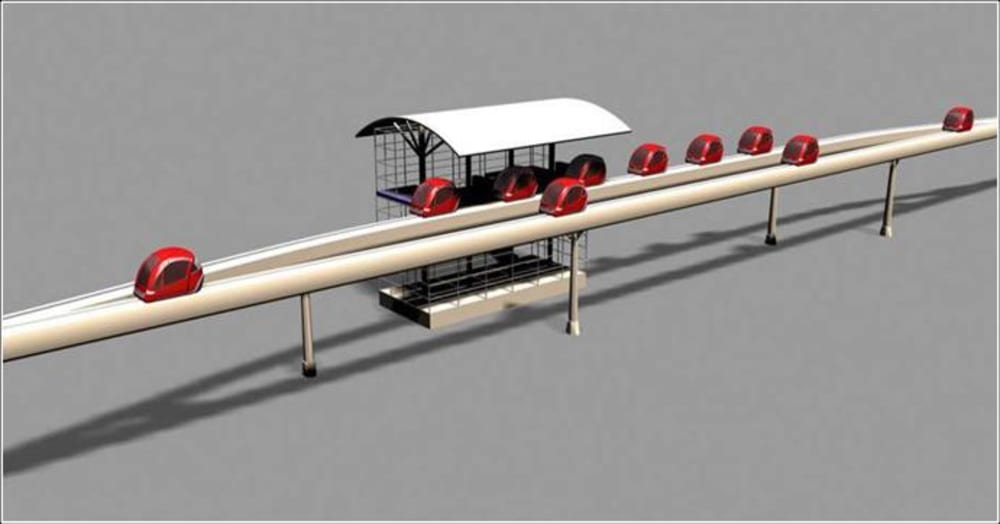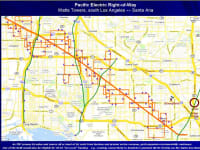One of the most valuable pieces of unused, government-owned real estate in southern California is the Pacific Electric Right-of-Way -- a now trackless Red Car trolley corridor running from Watts Towers in south Los Angeles (near the Metro Blue and Green light rail alignments) to the Orange County seat in Santa Ana, 24 miles southeast.
Numerous studies of this corridor have recommended at-grade or elevated light rail (LRT), roadway or busways (BRT) to enhance commuting options and transit in this densely populated area. Elevated maglev has even been considered. But, since the RoW runs diagonally to surface streets through working-class neighborhoods, no at-grade LRT or BRT technology can utilize it for its direct routing between two of California's largest counties, and downtown LA. On/off ramps to an elevated highway would be impossible, and traffic noise would be unacceptable. Elevated LRT or buses are simply cost-prohibitive.
Personal Rapid Transit (http://bit.ly/mWGsSk) is perfect for this application. It is far LESS expensive than light rail, providing for no-wait, non-stop, direct connections using driverless, computerized electric vehicles. PRT has successfully transported millions of Morgantown, WV citizens and university students withOUT incident since the 1970s (http://bit.ly/mtownpps).
PRT works here (http://bit.ly/iTYnw2) as a low-impact elevated technology that still allows the RoW to be shared for other use like parks, bicycling, parking or revenue-generating real estate. Using the corridor as a backbone, unlike LRT, PRT can be networked (http://bit.ly/perowanimation) off it and into neighborhoods, along arterials, alleys, rivers and flood control channels. Any number of offline, elevated stations are possible which will NOT degrade transit time as do added stops for linear rail or buses. PRT is highly scalable and can readily match passenger capacities with its competition.
Unlike conventional transit, PRT works well in public/private partnerships. E.g., a big-box retailer could allow guideway over its property and fund an offline station to attract patrons. If schools were built in the corridor, they could have rooftop stations and move students and staff. Vehicles are easily branded, leased or sold as investments. Hotels and hospitals are excellent candidates for privately funded stations.
* Innovation
PRT overcomes the limitations of conventional transit via automation, flexibility and minimal impact to the neighborhoods. Sophisticated computerization automatically allocates vehicle resources to empty stations so passengers do not wait for them.
* Manufacturability
PRT is sold by three global firms (Vectus, ULTra, 2getthere), all having successful implementations underway today. PRT vehicles could readily be assembled in the US and California. Guideway can be built in a factory.
* Marketability
PRT offers options that legacy technology can not. It will be affordable in an era of $4+/gallon gasoline, and attract local commuters and investment. Its guideway can support solar panels.
* Cost-effectiveness
PRT costs only $20-35 million/mile. LRT easily doubles, triples or quadruples this cost.
Video
Like this entry?
-
About the Entrant
- Name:Roy Reynolds
- Type of entry:individual
- Software used for this entry:PowerPoint, Visio
- Patent status:none








